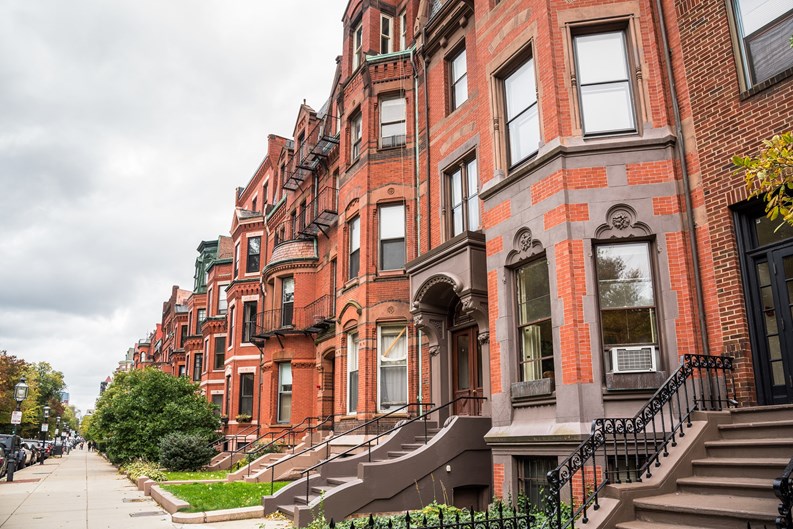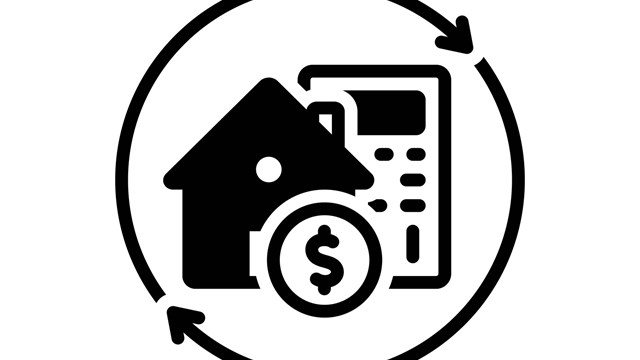Humans have been grouping ourselves into communities for almost as long as we’ve been walking upright, from loosely organized kinship groups to planned subdivisions containing hundreds, even thousands of families. Condominium and homeowners associations are just another type of community, with their own governing structure, leadership, and regulatory framework.
A Bit of History
While HOAs and condominium associations share many similarities, including shared governance, shared financial obligations, rules, and covenants, there are key differences, particularly under state law.
In New England, condominium law developed in the 1960s and 70s in response to the increasing demand for multi‑unit and retiree housing, as well as vacation homes. Massachusetts’ condo statute, Chapter 183A of the Massachusetts General Laws, has been in place for many decades, and establishes a legal framework for how condominiums are formed, how trusts or associations of unit owners are governed, and the rights and obligations of owners.
By contrast, HOAs are common in subdivision developments of mostly single-family homes or townhouses, and are often governed purely by covenants, conditions and restrictions (CC&Rs), deed restrictions, and, if incorporated, by laws pertaining to nonprofits. In many New England states, statutory condominium laws do not apply to HOAs, unless the governing documents of a given community explicitly incorporate or reference them.
That said, there are some minor variations from state to state: In Massachusetts, the aforementioned condo statute sets detailed rules for communities and gives associations special powers, like the ‘super lien’ for collecting unpaid assessments. Rhode Island, New Hampshire, Vermont, Maine, and Connecticut each have their own condominium or planned community statutes covering the same principles around master deeds, bylaws, developer control, voting, and lien rights. The details about things like how percentage ownership is calculated, what notice is required for elections and other important matters, and when and how meetings can be held may vary slightly from state to state, but for the most part, condo laws are fairly uniform throughout New England. By contrast, there is no comparable statute for HOAs; they’re usually nonprofits under the general corporate law and guided primarily by their governing documents.
It’s All in the Docs
Those foundational docs often include the association’s Declaration or Master Deed, its bylaws, and house rules and regulations residents must abide by, and specify things like what the community’s common areas and shared elements are, what responsibilities the association has for physical maintenance, etc., what obligations the owners have, how monthly fees are set, how meetings are to be announced and conducted, how trustees or board members are chosen, etc.
In states with condominium laws, those statutes overlay and sometimes fill in gaps that may exist in a community’s own documents around things like trustees’ lien powers and other decision-making authority, and how governing documents themselves must be recorded with municipal or state agencies in order to be legally binding. Depending on the state, the association itself may also need to be incorporated in order to have legal standing to do things like hold property, levy liens, or sue—and some states, a condo or HOA must contain a minimum number of units or minimum acreage in order to qualify as an HOA at all, or must have been formed after a certain date to qualify automatically. In Rhode Island, for example, condominiums created after July 1, 1982 are governed by the state’s Condominium Law; older ones may opt in.
Who’s Running the Show?
Many newly-built condominium and HOA documents include a period during which the original developer controls the board. That control typically ends after a certain number of units are sold, or after a certain period of time. After that, unit owners elect the board, the structure and powers of which are determined by the governing documents, state and local law, and corporate law, if the association is incorporated as a nonprofit.
The number of members on the board is set out in the community’s bylaws, which also spell out rules around term lengths, how many trustees may be elected each year, whether terms must be staggered, and so forth. While the typical board has around seven members, small communities may have boards with as few as three members. In the case of very small associations, say a three-unit condo, everyone in the building may be a board member, or the association may be run very informally, with neighbors speaking about issues as they come up.
The documents also usually provide for quorum, voting procedures, and how meetings can be called or noticed. In many condominium statutes, voting is weighted by “percentage interest” in the common areas, often proportionate to unit value. For HOAs, the voting scheme depends entirely on what the CC&Rs or governing documents specify.
A Word on Co-ops
While less common in New England than in places like New York, residential cooperatives offer a third model of multifamily housing—though one that’s significantly more restrictive than a condo or homeowners association. This is because co-op owners don’t own their units in the sense of having a deed to a piece of real property. Rather, they own shares in a cooperative corporation that in turn owns the building in which their apartment is located, and are issued a proprietary lease for their unit by the corporation. They can sell those shares and transfer the lease applicable to their apartment—but only to an approved buyer. That approval is given (or withheld) by the co-op’s board of directors—and most boards flatly forbid renting or subletting units, though there are some exceptions.
Co-op board members, like all the shareholders, are proprietary lessees, with the same rights and obligations as the rest of shareholders. The board are the elected representatives of the corporate shareholders in the co-op, and the governing documents of the building dictate their authority.
When it comes to handling building and mechanical issues such as plumbing, repairs, etc., condos and co-ops are very similar, with exceptions occurring more as a result of individual governing documents than law or statute. The main area of difference is found with regard to issues of subletting and sales. In a co-op, the board has the right to review and approve both. In a condominium, an owner can sublet without board approval. An owner can sell a unit without board approval as well, though in most states the condo board does have a right of first approval to act as a substitute buyer.
Fiduciary & Other Duties
Once elected, boards and trustees have what’s called a fiduciary duty to the association and its members—meaning they must act in good faith in accordance with their bylaws and other governing documents and in the best interest of all owners. They have a legal duty to keep up with maintenance, avoid conflicts of interest, keep accurate financial records, and make budgets, statements, reports and notices accessible to owners.
That transparency is crucial, says Ellen Shapiro, a community law attorney with Marcus, Errico, Emmer & Brooks in Braintree, Massachusetts. “Administrative transparency generally demonstrates that the board is not just exercising its discretion in the performance of its duties, but is exercising it in the best interest of the association.”
And, Shapiro continues, “The biggest misconception unit owners have is that the board exists to serve the owners individually. The board is not the landlord; the board is representing the community as a whole. It represents the organization, not the individual owners—and many owners don’t understand that. This problem is created when unit owners have (or are given) the impression that they can call management, the board, or even the association attorneys at any time and speak with them about anything in their interest. The board governs the common elements, not the individual units—although decisions they make may affect individual units. ‘If it happens in my unit, the board has to deal with it,’ is not how it works. The board is not your landlord, or your parent, and it can’t fix your individual problems.”
Nine times out of ten, serving on a board involves regular, predictable tasks like drafting the budget, overseeing maintenance of common areas and shared building systems, hiring and supervising contractors or staff, holding meetings, and responding to owner questions or complaints. But occasionally boards are faced with less mundane situations that demand a bit more consideration and skill to manage, like litigation or a major conflict between neighbors.
The vast majority of trustees are volunteers, so when these less common issues arise, smart boards seek professional guidance to help them navigate a path to resolution. When a lawsuit is brought against an association, or if the property is found in violation of town regulations like zoning, safety, or building codes, whether professionally or self-managed, the first order of business should be to call the community’s legal counsel. If a fire, flood, storm, or other emergency causes damage, the association’s insurer should be the first to know. In newer developments, defects in construction or design may show up; trustees may have to coordinate inspections, negotiate, and possibly litigate to resolve these issues.
Boards must also oversee major capital projects like roof replacements, facade restorations, and structural repairs. These big jobs require bids, reserves, sometimes special assessments, even owner approval, which means boards must act as duly elected administrators, not dictators.
Professional vs. Self Management
In order to carry out all those aforementioned duties and tasks, many buildings and associations contract with a professional management company to help execute their boards’ decisions and handle the day-to-day supervision of the property.
In these communities, the manager is intended to be the arm of the board, while the board itself makes the actual material decisions—though some of those decisions, like purchasing of supplies and managing any on-site staff members, are delegated to the manager so the board can focus on the bigger-picture items.
According to Scott Wolf, CEO of BRIGS, a property management firm based in Boston, his responsibilities as a manager in a condo building are basically the same as they are in a rental building. The difference is that in a rental building, “I have one contact person—the landlord—whereas in a condo,” in which each unit is individually owned, “I often have multiple contact persons.” While having one contact person is clearly simpler than having dozens or even hundreds, the day-to-day operational and administrative tasks needed to keep a building or association running smoothly don’t necessarily change with scale. “Overall,” Wolf explains, “the nature of the work remains the same.”
That also holds true for management agreements for condo associations and HOAs, which are fairly uniform, boilerplate contracts, though individual buildings or communities may have unique physical, financial, and staffing considerations that should be considered addressed. Every management company has its own form, but standard contracts include (but aren’t limited to) the management fee, when and for what of tasks the client is to be charged for services outside of what the contract specifies, when the contract ends, whether it’s cancelable with or without cause, and what the potential penalties for doing so might be.
Shapiro adds that once finalized, “Management contracts are often sacrosanct—very little can be changed.” She explains this to her clients when they seek her expert advice before entering into a management agreement. “Like any contract, though, the standard management contract should contain start and end dates and financial considerations, as well as the role and duties of the manager.” The expectations of the client—in this case a co-op corporation or a condominium association—should be clearly delineated.
While professional, dedicated management offers a great many benefits to multifamily communities, some choose to go it alone, with the board making all decisions about the maintenance and management of the community, arranging for everything the building or HOA needs to operate, from locating a roofer or plumber, taking out the garbage, or handling snow and ice removal. This type of self-management is typical for smaller communities with fewer than 25 units, and is often a matter of financial wherewithal; contracting with a professional management company may simply not be in the budget.
Much larger communities—those with dozens or even hundreds of units and extensive amenities like pools, sports courts, clubhouses, and so forth—often hire a designated on-site management professional who serves the association exclusively. Since there is no larger off-site managerial firm involved, these communities are also considered to be self-managed, even though their board has the input of a professional to help them govern.
It’s About Community
Whether you live in a three-unit association in Portland, a Connecticut co-op, or a sprawling luxury condo in Boston, you’re part of a community-within-a-community. Understanding how the community you’ve bought into is structured, how it operates both socially and administratively, and how you can contribute to its flourishing over the long term by joining the board or serving on a committee is part of the responsibility of belonging to a shared-interest community.







Leave a Comment